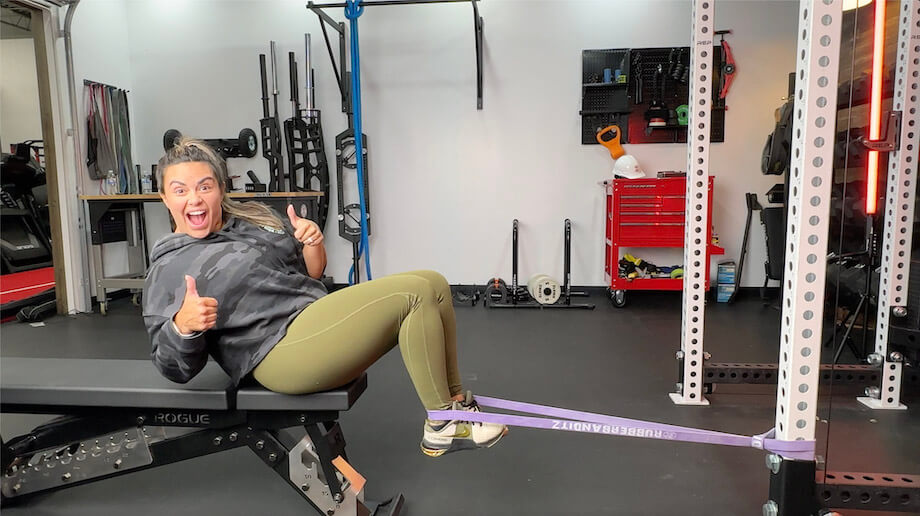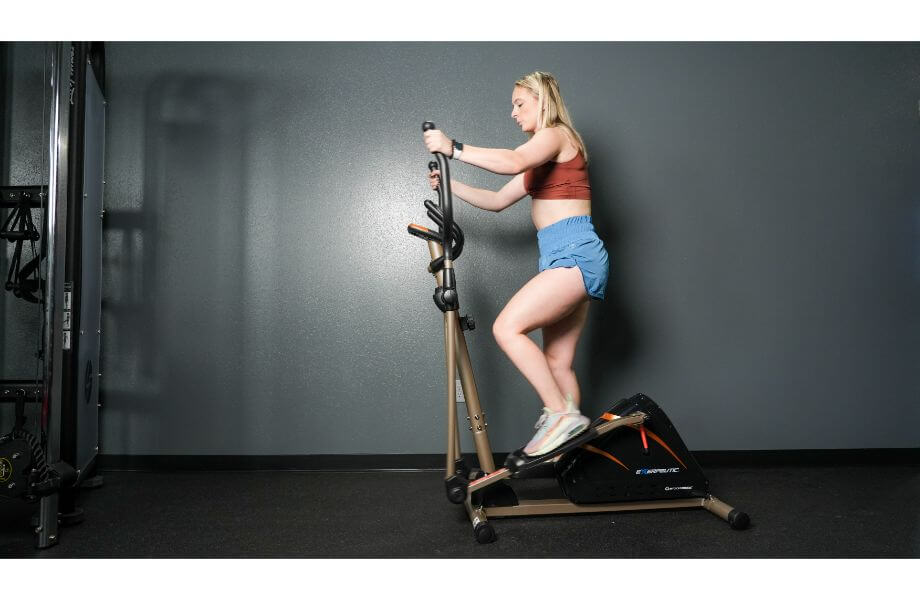Training your hamstrings is important for posterior chain strength and lower back support, but it can be challenging to include them in your workout if you don’t have access to a full gym or prefer to work out at home.
If banging out reps on a selectorized leg curl machine just isn’t in the cards for your barebones home gym, read on to learn how to do hamstring curls at home.
Why Do Hamstring Curls?
Strong hamstrings can take the pressure from heavy hip extension movements like deadlifts. Weak hamstrings probably mean your lower back is going to take a lot of punishment when a barbell is out in front of you.
These might also be great leg exercises for you if back pain keeps you from barbell squatting or deadlifting. All resistance training is essentially stretching, and stretching those hamstrings with load may prove beneficial for back pain1.
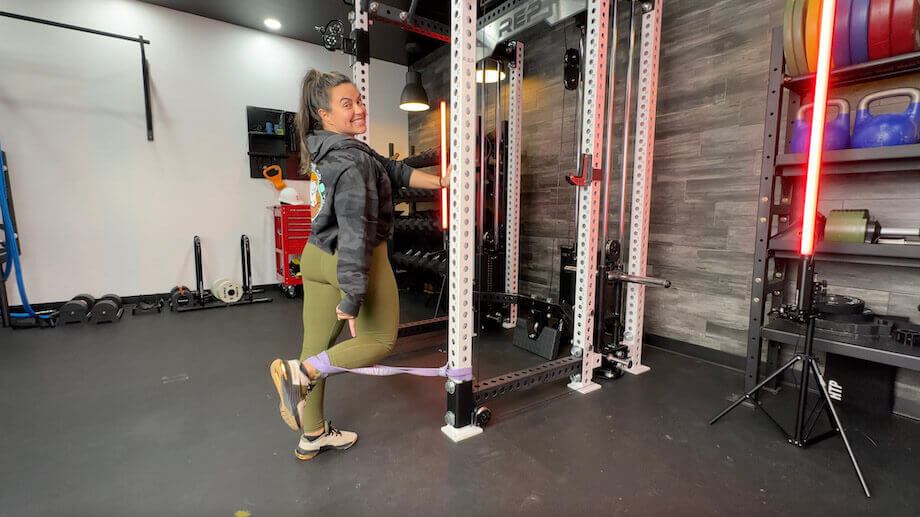
There are several variations of both single leg and double leg hamstring curls, which both provide a sick pump and are simple to do at home with minimal or no equipment.
6 Hamstring Curl Variations to Do at Home
The equipment used below is as sparse as it gets. If you don’t have a stability ball or resistance bands, you can simply remove them from the exercise and move your lower body through space without added load. Amazon often has good deals on them, so consider purchasing either a ball or bands if you don’t already have them.
Stability Ball Hamstring Curl
Why Do It: This is an open-chain variant of a glute bridge. The “added resistance” in this hamstring exercise is just keeping the ball in control as you roll it back and forth.
How to Do It:
- Lie supine on the ground (on your back).
- Place your heels on a stability ball and lift your butt off the floor so your legs are in a straight line with your body.
- Contract your abs, glutes, and hamstrings to roll the ball toward you until your knees make a 90-degree angle.
- Roll the ball back out until your legs are fully extended again.
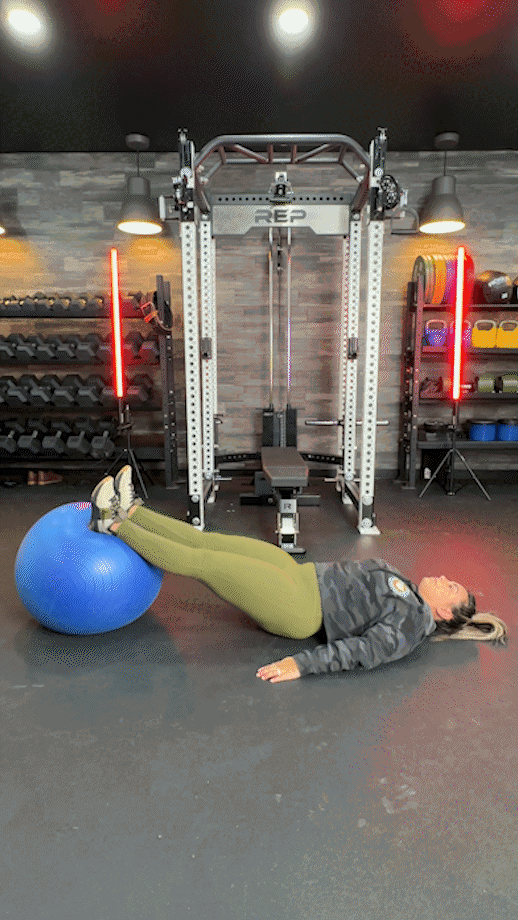
Prone Banded Hamstring Curl
Why Do It: Sometimes I just don’t want to get up off the ground, but I need to do some kind of hamstring exercise for lower body assistance before I leave the gym. Enter the ground-cuddling hamstring curl… I mean prone position hamstring curl.
Lying flat on your chest (the prone position) in a straight line really makes it hard to cheat, which means the contraction at the point of greatest flexion (and greatest band resistance) can be intense, but not as intense as a Nordic hamstring curl2.
How to Do It:
- Lie face down on the ground with your legs fully extended.
- Loop a resistance band around your power rack or other large, immovable object, and loop the other end of the band around your left foot.
- Squeeze your hamstring hard and bend your left leg until your heel touches your butt (or as close as you can).
- Return to the starting position and complete all reps, then switch legs.
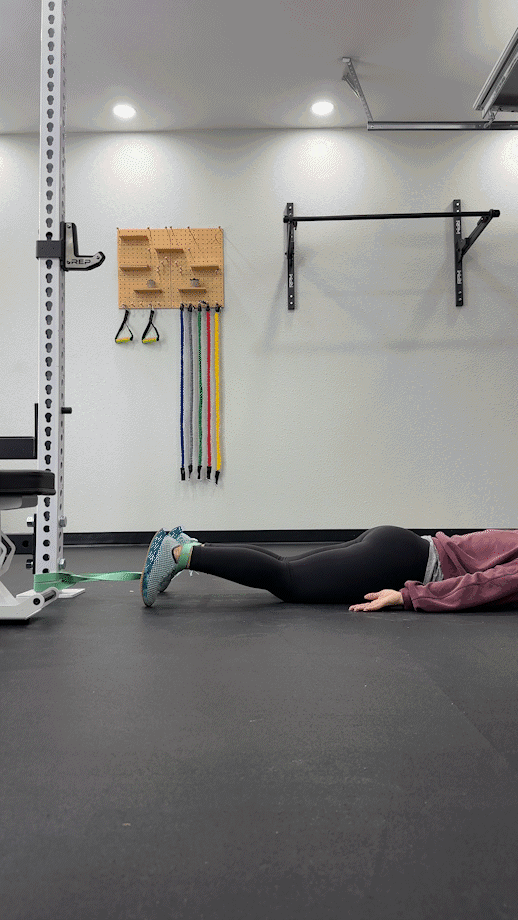
Standing Banded Hamstring Curl
Why Do It: This is my go-to hamstring pump exercise when I’m in my home gym. It takes 3 seconds to set up, and it doesn’t take long to knock out enough repetitions to mentally put a “Finished” stamp on another leg day.
How to Do It:
- Loop a resistance band around a power rack, tree, or other heavy object.
- Stand upright with your back straight, facing the anchor.
- Place your left foot inside the band loop so the band tightens as you pull your leg away from the anchor point.
- Balance yourself, then bend your knee until your left foot touches your butt (or as close as you can get).
- Return your left foot to the starting position.
- Complete all required reps, then switch legs.
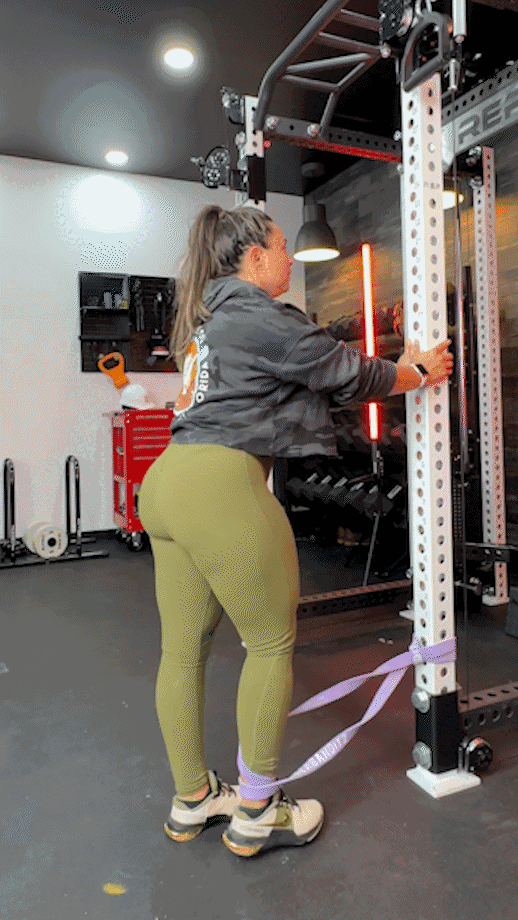
Seated Banded Hamstring Curl
Why Do It: This is a little harder to pull off than you’d think. A machine seated leg curl is simple, and has a specific type of pump people usually enjoy or loathe. This banded version requires more stability and a weight bench or chair with an appropriate height.
You need something with a conventional seat-and-post design; a plyometric box won’t work. You need something that allows your feet to go underneath your body at peak flexion.
How to Do It:
- Sit upright on a bench or chair.
- Loop a resistance band around a power rack or other immovable object.
- Loop the open end of the band around your left ankle. Be sure to be sitting far enough back that the band is taut when your knee is fully extended.
- Grab onto the bench for stability, and bend your knee under you as far as you can.
- Allow the band to pull your left leg back into the starting position.
- Complete all reps, then switch legs. You can also perform with both legs at once.
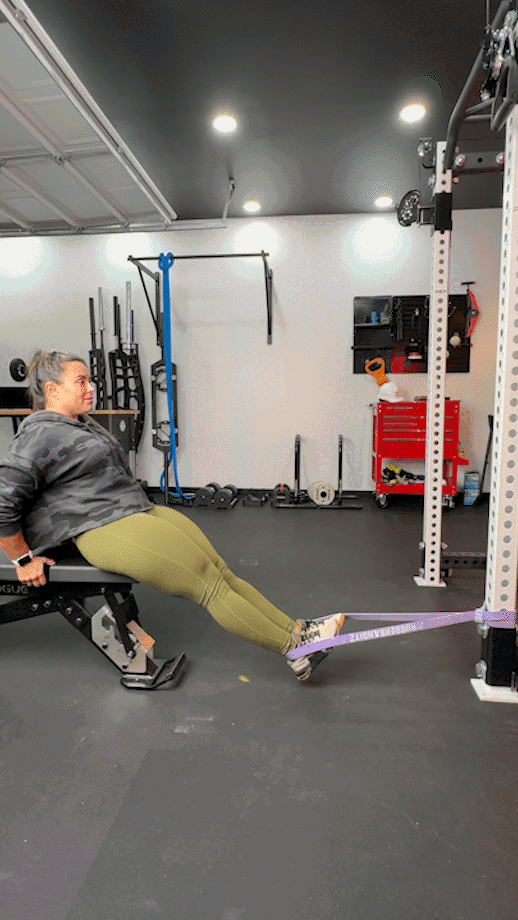
Nordic Curl
Why Do It: This is essentially a lying leg curl, but instead of moving a weight stack or resistance band, you move your whole body instead. This is the most intense true curl exercise, and requires a ton of hamstring strength to pull off without cheating. It has also been shown to potentially reduce hamstring injuries3.
Strong hamstrings or no, I would go ahead and cheat just to take a little pressure off the bottom of the movement. You can use a reverse band, have a friend assist you in forced reps, or use a pole to help you “climb up” the movement.
This is a very difficult addition to your leg workout, and will take time to build the total-body strength required to execute them correctly.
A nice little commercial gym hack is to do these on the lat pulldown machine, but you can use a Smith machine, a heavy piece of furniture, or have a friend hold down your ankles.
How to Do It:
- Lie in a prone position with your feet hip-width apart.
- Place your feet under your implement of choice.
- Keeping your body in a straight line, hinge from your knees and engage your hamstrings to lift your upper body into a vertical position.
- Descent slowly back to your starting position.
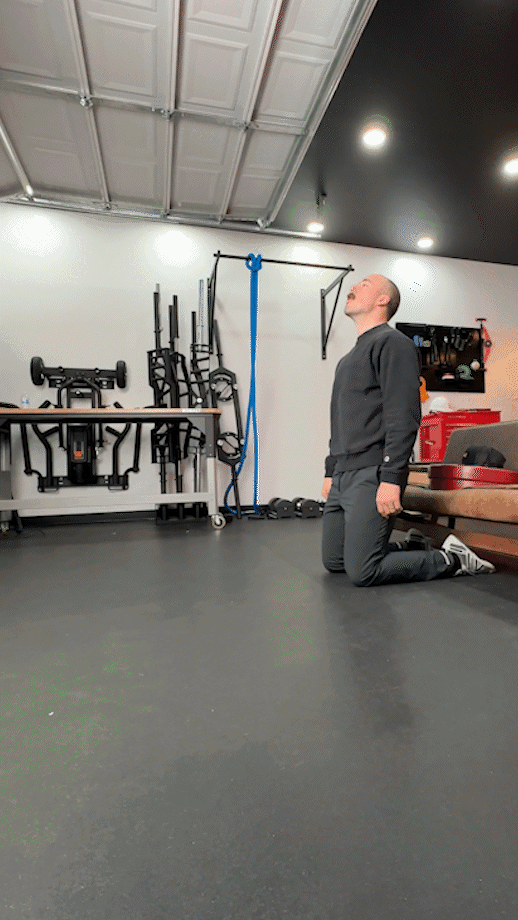
Banded Good Morning
Why Do It: This is great as a warm-up or a finisher for all the muscle groups of the lower body. Use a really lightweight band and shoot for super high reps—at least 50-100.
How to Do It:
- Loop a band over your shoulders and under your feet. You should look like you’re standing inside an oblong hula hoop.
- Stand with your feet hip-width apart.
- Hinge your hips back and try to bring your upper body into a 90-degree angle with your lower legs.
- Explode back up into a standing position.
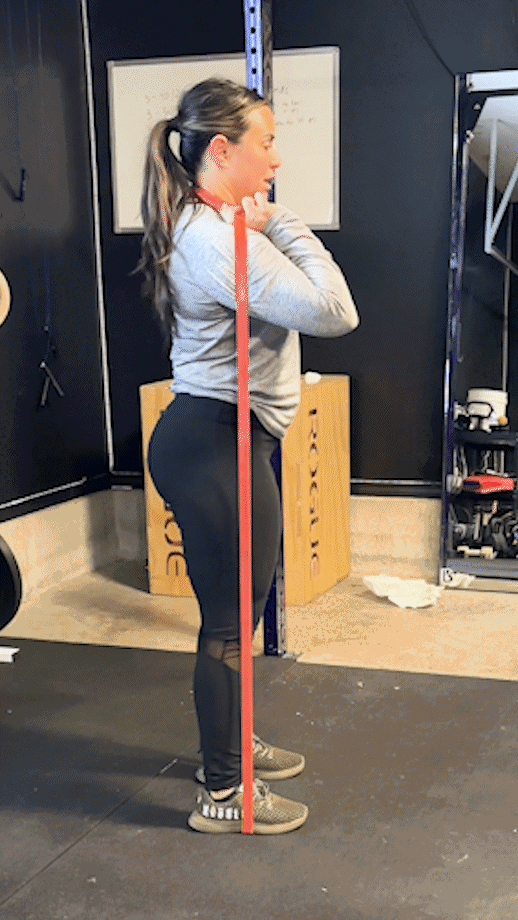
Trainer Tips for Form
It is important to maintain a mind-muscle connection on all of these movements. Everything needs to be focused on the biceps femoris, semimembranosus, and semitendinosus (the muscle group making up the hamstrings).
Under Pressure
This is especially salient for the resistance band movements. You want to keep tension on the muscle through the entire range of motion. This means the band can’t be floppy and limp when your legs are extended. The band tension will increase as the band becomes longer (this is known as Hooke’s Law4), but we don’t want it to go away completely at any point in the motion.
In Control
With these types of isolation exercises, we need to keep everything cool and controlled. While I want the good morning to be explosive, I don’t want your eyes to be bulging out with the strain of it. You should pick a band tension for every hamstring exercise that allows you to “play” with the weight a little bit.
If you are a cardio-minded individual, you can think of it like lifting in Zone 2.
FAQs: How to Do Hamstring Curls at Home
How do you do a hamstring curl by yourself?
With the power of resistance bands, anything is possible. You can directly substitute hamstring isolation exercises done on a cable machine, like standing leg curls, with resistance bands wrapped around a power rack.
An even easier way to do a single leg or double leg hamstring curl is to use your own body weight as resistance with an exercise ball or suspension straps.
What can I substitute for hamstring curls?
If you have access to free weights (up to and including a dumbbell, kettlebell, weight plate, small child, bag of dog food, or Oxford Dictionary) you can do stiff-legged deadlifts, Romanian deadlifts, or even kettlebell swings (also may be done with previously mentioned small child; results may vary).
These lifts hinge the hips and provide a deep stretch at the bottom, and, unlike other hamstring curl alternatives, do not provide the same type of range of motion offered by knee flexion.
How do you do a lying hamstring curl without a machine?
The glute ham raise (GHR) is the king of all hamstring flexion exercises, although it is less a leg curl alternative than a major lift you might do before moving onto a single-joint bodybuilding exercise.
Nordic hamstring curls are similar to the GHR, but without as much pressure on the glutes, and with extensive activation of the hamstrings5. You can do these in pairs, or with a reverse band, to help you cheat off the bottom.
How can I train my hamstrings without equipment?
Using a simple iso-hold by doing glute bridges (especially the single leg variety) can really work the hamstrings muscles (along with the glutes).
You can also perform any of the 6 hamstring curl alternatives listed above without any equipment! Beginners may find it difficult to do 100 standing hamstring curls without any added resistance, so this can be a great place to start.
References
1. Han HI, Choi HS, Shin WS. Effects of hamstring stretch with pelvic control on pain and work ability in standing workers. J Back Musculoskelet Rehabil. 2016 Nov 21;29(4):865-871. doi: 10.3233/BMR-160703. PMID: 27197706.
2. Pedersen H, Saeterbakken AH, Vagle M, Fimland MS, Andersen V. Electromyographic Comparison of Flywheel Inertial Leg Curl and Nordic Hamstring Exercise Among Soccer Players. Int J Sports Physiol Perform. 2021 Jan 1;16(1):97-102. doi: 10.1123/ijspp.2019-0921. Epub 2020 Oct 28. PMID: 33120362.
3. van Dyk N, Behan FP, Whiteley R. Including the Nordic hamstring exercise in injury prevention programmes halves the rate of hamstring injuries: a systematic review and meta-analysis of 8459 athletes. Br J Sports Med. 2019 Nov;53(21):1362-1370. doi: 10.1136/bjsports-2018-100045. Epub 2019 Feb 26. PMID: 30808663.
4. Science.org. Hooke’s Law.
5. Guruhan S, Kafa N, Ecemis ZB, Guzel NA. Muscle Activation Differences During Eccentric Hamstring Exercises. Sports Health. 2021 Mar;13(2):181-186. doi: 10.1177/1941738120938649. Epub 2020 Aug 28. PMID: 32857686; PMCID: PMC8167351.


